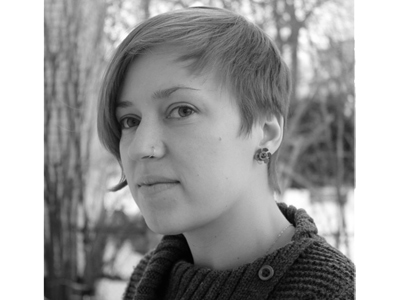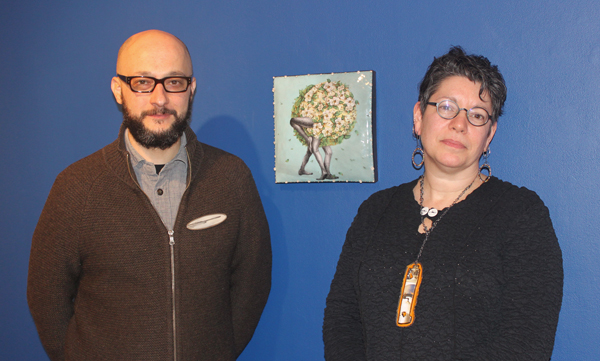
When I visited The Society of Arts and Crafts gallery space to interview Executive Director Beth Ann Gerstein and Exhibition Gallery Director Fabio J. Fernández, the comfortable, open three-room space looked like Christmas morning. Piles of discarded wrappings littered the floor and brightly colored pieces laid out, half unpacked, ready for display. Jessica Calderwood was in the middle of installing her solo show titled Floral Fictions, on view through April 19, 2014. Large, colorful enameled brooches sporting slick, surreal imagery were mixed with drawings and sculptures, the most immediately striking of which was a waist-high flowering bush with a pair of bare women’s legs sticking out of the bottom, ending in a smart pair of stilettos. The unnerving quality of Calderwood’s work in some ways sums up a visit to The Society of Arts and Crafts. Clever and sexy, it unapologetically refuses to conform to a single interpretation. Beth, Fabio, and I sat down in the farthest room, as the show began to unfold around us.
Celine Browning: I’d like to start with brief introductions. Can you both take me through how did you ended up at The Society of Arts and Crafts?
Beth Ann Gerstein: I’ve been here 21 years in March. Both Fabio and I came from Cranbrook at different times. My background was in jewelry and metalsmithing. I had been doing arts administration and curating, and not long after graduating, I got the job here as the director.
Fabio J. Fernandez: My undergrad degree is in business. I then took a couple of different turns. I was a community organizer through VISTA and Teach for America, and then eventually I decided I wanted to be an artist, which is how I found my way to Cranbrook. I studied sculpture, and while there, I developed a passion for curating. When I moved to Boston, this position was available, and it seemed like a good fit.
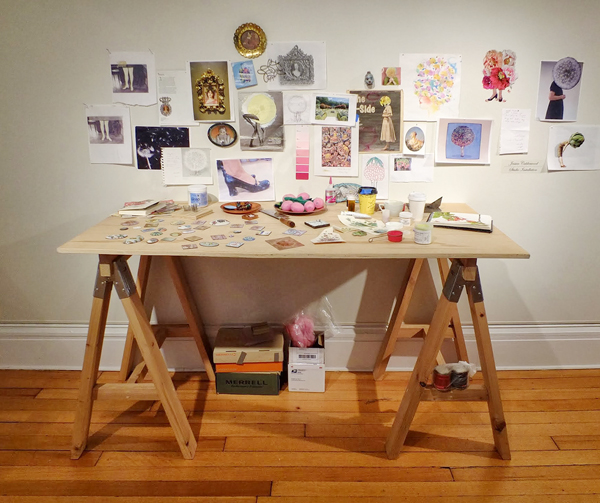
Fabio J. Fernandez: After finishing my degree in sculpture, I worked as an associate curator at the Cranbrook Art Museum, and one of the exhibitions I worked on was Cranbrook to Lancaster and Back: Selections from the Collection of Robert Pfannebecker. He’s an attorney from southwestern Pennsylvania who has been collecting the work of contemporary craft artists for 40 years. He’s been buying about one object a week for 40 years. So, every 10 years or so, he has to build another small structure to house his collection. He’ll mostly buy directly from artists, and he’ll pay them in installments. It was in visiting his home that I got the sense that there was this difference, that contemporary craft was somehow different. My introduction to Bob Pfannebecker helped me learn more about contemporary craft.
There are only a few galleries that specialize in contemporary craft in the Boston area. SAC is definitely the oldest and the most egalitarian in focus. It’s impressive that you make an effort to represent so many different craft disciplines. Given that your organization has a broad focus, to whom do you feel that SAC is accountable?
Beth Ann Gerstein: I think we’re accountable to ourselves, given that the board really allows us to manage the artistic direction of the organization. One of the cool things about the organization is that we not only show work from functional to sculptural, but we also show work from production through one-of-a-kind pieces. As long as it’s not straight photography or straight painting, we’ll consider it. We do that through the gallery, through retail, and through Craft Boston. We also have our artist grant program. So, we’re really a full-service organization for the artist community, and yet we also are serving the public.
Your current space is divided into a retail store on the first floor and an art gallery on the second floor. Can you talk a bit about the decision to divide the space in this way? How does the structure of the space change what is possible for the organization?
Beth Ann Gerstein: On some level, it may actually serve both topics better if they were side by side. It would be visually more connected. We’ve certainly talked about flipping it—putting the retail on the second floor and the gallery on the first floor—but we’ve never quite felt comfortable that was the right answer.
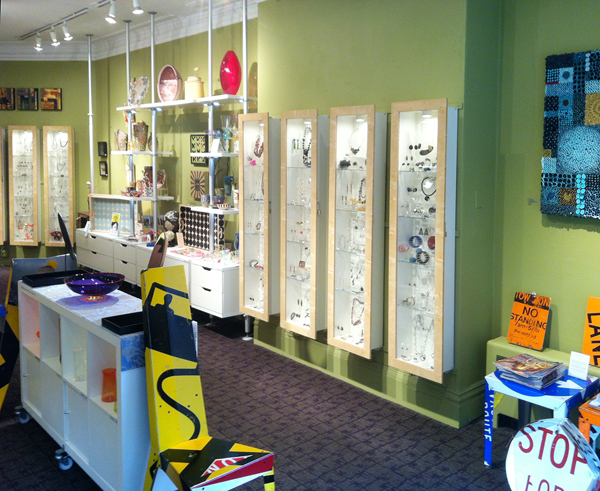
And why is that?
Beth Ann Gerstein: I feel like there are more people who will respond, at least on the front end, to a retail situation—people who might not walk into a gallery. In 1897, no one was showing craft, and there weren’t really retail stores for craft. This was sort of the whole reason why The Society of Arts and Crafts, both in Boston and in partner organizations across the country, started opening stores, because there weren’t really any venues. So, the store has always been a core of who we are as well as the exhibit program. To me, they’re equal, but for different reasons. It’s not an either-or. Our mission, in shorthand, is to promote and educate about contemporary craft. Well, there are lots of ways to do that.
Fabio J. Fernandez: Our model is somewhere between a commercial gallery and a museum. We don’t have a permanent collection, and of the exhibitions we have, all the work is for sale. We think it’s important to connect an art object with someone who loves it, and money goes to support the artist and a portion of that money goes to support our organization so we can continue to be here. I like the idea that you can go to a highly curated exhibition space and potentially be able to afford an object there. That’s not possible in museums.
Anyone who walks into your biannual jewelry show From Minimal to Bling can buy something and take it away with them. Does the decision to make the show “cash and carry” compromise your curatorial vision at all?
Fabio J. Fernandez: I don’t think it does
Beth Ann Gerstein: I don’t think it does either.
Fabio J. Fernandez: I mean, we’re selecting work that we believe in, and we’re installing it in a way that we believe in, and if someone loves it and wants to give us money for it, we’re happy to make that connection—between the artist, the object, and very important funds.

The reason I ask that question is because there seems to be a disconnect between the desire to put together a strong show made up of objects that work well together and the ability of a client to come in and take a portion of that show away.
Beth Ann Gerstein: Well, there were a few objects in the last show, such as some of the neckpieces by Kat Cole, that would have left a significant visual hole had they not been there. Luckily, we were able to hold onto some of the larger pieces for the show because they were personal purchases as opposed to gift purchases. The flipside is that there are shows where every day it’s kind of a new look, and there’s some fun in that.
Fabio J. Fernandez: Whenever possible, if there is a great piece that lends a lot to the installation, then we ask to keep it for the duration of the show. But, you know, with the winter exhibitions that are cash and carry, the reality is that you go to this great gourmet restaurant and you’re presented with this beautiful plate that the chef has labored over, and pretty quickly, it starts to change and disappear.
Beth Ann Gerstein: It’s part of life. We don’t think it’s a bad thing. And the other three shows a year are a more standard setup.
There have been many changes to the world of craft in the past century and beyond. Contemporary craft as it exists today would, in many ways, be unrecognizable to the founders of the arts-and-crafts movement. How has SAC responded to changes in the field?
Beth Ann Gerstein: I think that we have both embraced it, and at different times and different topics, we have been the ones to lead the charge. I’ve seen in some of the shows where we’ve jumped off the cliff on certain topics before the rest of the community embraced those ideas.
Can you give me an example?
Beth Ann Gerstein: Well, unfortunately it’s not a jewelry example, but in 1991 there was a big glass conference in Boston, and we did a glass show, specifically a flamework exhibition. Everyone said, “You’re crazy. Flameworkers? They’re pipe makers!” It was a beautiful show, and it was the best of what was going on with flameworking at that time. And that was the first glass conference where flameworking really got its due. It was a tipping point to recognizing flameworking as just another technique to be used. I think there have been instances when we have made decisions to do something, and it’s been the right time, and we’ve been slightly ahead of the curve, and it’s been just because we saw a situation, an opportunity, a technique, an artist, something that seemed worth pushing out front.
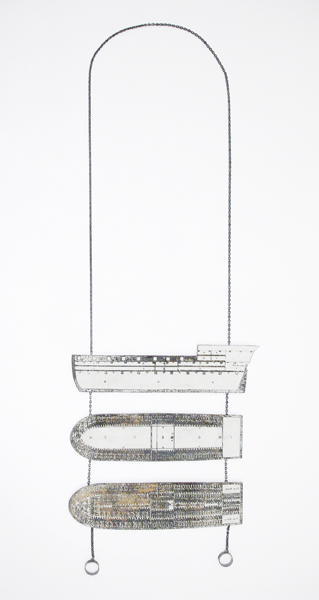
Fabio J. Fernandez: I think it’s a little bit of both. I mean, there was an exhibition here a few years ago when Obama first won. It was called Political Craft, and we had a lot of discussions with artists about what is political and what is political craft, and I remember talking to Jacque Liu, an artist, and he said, “You know, just being a functional potter is a political act.” Within the context of the field, I think one of our challenges is to represent different media and program areas; within our two- to three-a-year exhibition schedule, to touch upon work that’s jewelry or metal or ceramics or fiber. I don’t know if it’s political, but it’s trying to be conscious of good work that’s being done.
Beth Ann Gerstein: We’re not always trying to figure out “where does this show fit in the position of our history?” We’re trying to embrace where the community has come from, so therefore, good, functional work, whether it’s pottery or jewelry, still deserves to be reexamined and looked at as much as the most cutting-edge, CAD-designed, new-material-oriented work. We think that all of that deserves to be in the continuing discussion here.
So, to put the political question a different way, do you see what you’re doing here as a reflection of craft as a field—of what’s happening now—or do you see it as a particular view of what craft can and should be?
Beth Ann Gerstein: <Laughing> Yes.
Fabio J. Fernandez: I think a little bit of both. I feel like we’re supporting the underdog here. And I like that.
Do you feel like the mission of the organization has altered at all as a result of the changing terrain of craft?
Beth Ann Gerstein: No, because a good mission statement should be able to survive 50 to 100 years. And yes, the verbiage has altered slightly from the original 1897 mission statement due to some of the word choices, but I think that the intent hasn’t really changed in 116 years.
That’s pretty rare.
Beth Ann Gerstein: I feel pretty good that everything we do fits our mission. It’s just to promote craft, however that is. Whether it’s supporting artists or getting the public to see it, everything we do fits, even though what we do has changed slightly over the years. The organization has always been very flexible. As opportunities present themselves, or we see potential opportunities, we’ve been flexible to make some of these things happen relatively quickly.
So Beth, you’ve been here for 21 years. Can you take me through some of the highlights of your tenure?
Beth Ann Gerstein: I don’t know. How do you sum up 21 years? The Wendy Maruyama show Fabio and I put together that is now touring the country is certainly a highlight. The other thing I’m very proud of is our artist awards program. Our first awards were given out in 1994 with a small surplus from the retail gallery. The retail gallery had a good year, and the board voted to use some of the surplus to give away a little money—and we’ve given out almost $100,000 to date through that program. In the mid-90s, we were able to set up an endowment for it, so now the program is perpetually funded. We’ve gone from $2000 for four awards to $3000 for three awards and an exhibition, and all indications are that we’ll be upping that amount in the 2016 cycle.

Fabio J. Fernandez: The artist awards, a juried competition for New England artists, have been a good thing for the organization and regional artists. I often think museums and nonprofit arts organizations are accused of ignoring the talent in their own backyard, so the artist awards program is a step toward trying not to do that.
What are some unique challenges you face as an organization?
Beth Ann Gerstein: The one I think we’re currently grappling with is that we feel there’s so much more that we want to be doing. Many events have to be off site, and it’s always kind of challenging to look for new locations. We spin our wheels a lot trying to find an appropriate space that’s near enough to our main location. I’m looking forward to that next space that can really accommodate what we really feel we have to offer the regional community. Although our programming is inclusive of a much larger geographic area, the reality is that we are really serving the audience of those who live and work in the greater Boston area and those who are visiting. We’d like to be able to do that even more.
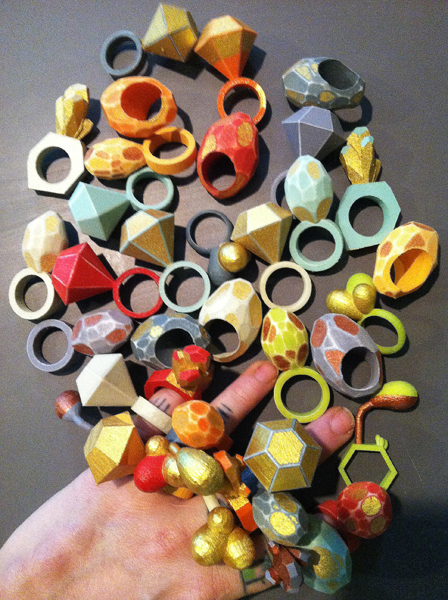
Beth Ann Gerstein: Well, we really believe that Boston deserves to have a great place for craft. Not that you can’t see great craft at the Museum of Fine Arts Boston as part of your visit, but there’s room for more than just the larger institutions. There’s more to our community than that.
Fabio J. Fernandez: And we’re flexible and nimble. Our exhibitions are planned a year-and-a-half in advance, but that said, if there’s something that’s happening and it’s right, we can move quickly.
Is there anything we haven’t covered that you would like AJF readers to know about the Society of Arts and Crafts?
Fabio J. Fernandez: Yes. I think that AJF readers and AJF collectors should be actively involved in getting the next generation of collectors interested. My concern is that our base of collectors is of a certain age, and we need a next generation of collectors who are just as enthused about studio jewelry as the current collectors.
Beth Ann Gerstein: Yes. The end product is buying, but there’s also talking about it, wearing it, general appreciation! You don’t latch onto this out of nowhere.
Fabio J. Fernandez: I mean, it’s amazing. We go to all these schools and do critiques, and people are studying and spending a lot of money to learn, and it’s really important, what they’re doing. And we’re trying to get that out to others, you know?
Beth Ann Gerstein: We say this every time we’re out doing critiques—as a jeweler, why aren’t you wearing your jewelry every single day? You have the best marketing gig available. Potters can’t walk around with their pots saying, “Look what I make!” but a jeweler can. So, the jewelry community has this special opportunity. We want to be doing programs for “Joe Public” that may not be well informed, but also for collectors and for artists. Everybody in the community needs to be healthy and participating for this whole system to work.
